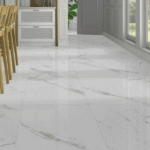As you may already know, there are two different kinds of piping when it comes to drains. One is the traditional drain pipe and the other is the gravel drain pipe. Both of these are very different in terms of functionality and as well as the different properties that they have.
Moreover, there are many factors that come into play and ultimately, you need to choose the best materials for your drain pipe. But how do you know if you need gravel for a solid drain pipe?
Well, it’s common for people to wonder if they need gravel for the drain pipes. Even though it is possible to use gravel for solid drain pipes, it is not recommended as this can cause major problems.
Look, as the name system, the pipe in this system is solid, and not perforated. Therefore, there’s no need to introduce gravel along the drainpipe’s length for drainage. One major benefit of a smooth drain is that it can drain quickly and you may use a drain snake to clean it out in case it gets clogged.
Table of Contents
Do I Need Gravel For Solid Drain Pipe? What Kind of Gravel to Use for Drainage
In most cases, larger-sized gravel is considered better for drainage. Stones with a size between half and an inch may be ideal to allow for water passage as well as to prevent debris from accumulating in the drain. Moreover, larger stones will not accidentally become compacted in case of heavy flows.
Gravel that is larger will be better for drainage. The ideal size to prevent debris and still allow for water passage is a stone that is between half and an inch across. Larger rocks won’t unintentionally compact when there are strong flows.
The Best Gravel Size for Drainage
For drainage, you should generally aim for 1 to 1 1/2 inches of gravel. As mentioned, larger gravel may be necessary for areas with particularly heavy flow. Also, bigger gravel is required for construction without drainage pipes. For instance, 1 ½ inch gravel is required for a French drain without perforated pipe.
You might also be wondering whether to use gravel or sand for drainage. In this case, the most important thing to note here is that the gravel layers provide much better drainage than sand. In other words, sand-based layers don’t drain as well as gravel-based ones do.
A layer of medium-sized angular gravel will make it easy for water to flow downhill. Sand, on the other hand, will pack firmly and collect water, meaning your ditch, trench, or driveway will flood or be ruined by washouts.
Sand-based layers don’t drain as well as gravel-based ones do. Water will be able to flow downhill on a bed of medium-sized angular gravel. Sand, on the other hand, will pack firmly and collect water. Your ditch, driveway, or trench will flood or be ruined by washouts if you use sand instead of gravel.
If you’re using a 4-foot French drain with a normal width and depth of 10 inches and a depth of 12 inches, you would require around 0.72 cubic feet of gravel per foot of French drain “sewer pipe. However, if you’re using a 6-inch pipe, you would only need about 0.6 cubic feet of gravel “sewer pipe.
Common Drain Mistakes and How to Avoid Them
When working on a problematic drain, you may end up making some miscalculations or mistakes in an attempt to fix the issue. So in the next section, we will discuss some of these mistakes and how you can avoid them:
Not Calling Before You Start
The most common mistake in residential trenching and digging tasks, such as drainage, is neglecting to make calls to check for subsurface utilities. It may seem obvious, but many homeowners tend to overlook the need for checking if there are any utilities underground. Note that trenching through a gas line or a power line can be dangerous and even expensive to repair.
So it’s better to call 811 before beginning any excavating activity where you’re not certain there are no buried utilities. This way, all the local utilities in your area will come out and physically inspect and mark with paint any utilities on or near your property.
Moreover, there can be additional regional limitations on water runoff or homeowner association agreements that could stipulate how and where you can install drainage on your property.
Using the Wrong Type of Drain Rock
Proper drainage rock is essential for adequate drainage and permeability. You might want to choose a clean, natural round stone for your drain fill material to provide smooth flow through the aggregate and prevent system clogging. When available, 1-1/2″ clean round rock can be a great choice of stone.
In case round rock stone is not available in your area, and the only workable option is crushed stone, it is recommended to use a sock-wrapped drainpipe. The sock material will keep the crushed rock fines from clogging up your perforated or slotted pipe’s inlet holes.
Not Using Drainage Fabric when Lining the Trench
Another common mistake that leads to early French drain failure is failing to line the trench with a non-woven geotextile fabric. In addition to allowing water to flow freely, the drainage fabric serves as a soil divider, keeping dirt and other particles from mixing with your rock fill.
Therefore, without this drainage fabric, there is nothing to prevent the subgrade soil from contaminating your drain rock, which may eventually cause congestion or failure over time. So if you want to make sure that your system performs for decades without problems, then be sure to line your trench with quality geotextile drainage fabric.
Putting Excavated Soil Back Into the Trench
Trenching can be labor-intensive, therefore contractors and homeowners occasionally find it simpler to pile the leftover dirt or clay from the excavation on top of the freshly installed drainage system. However, this is not recommended.
Excavating the trench and installing a drain system is usually done in a case where the soil didn’t drain as expected.
The best drain fields are porous as they allow water to move freely to its intended location. The capacity of your French drain will eventually be reduced as a result of adding more soil or clay to the drainage system.


